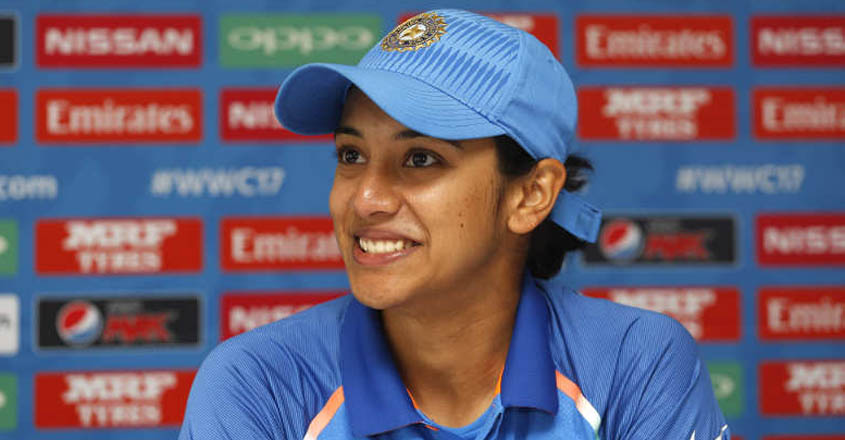Senior Indian woman cricketer Smriti Mandhana has disclosed that she is not affected by a pay-cheque lower than her male counterparts. Her statement comes at a time when there have been vocal demands about pay parity across all sports.
Mandhana, however, seems to have taken an objective stand as she understands how the sports economy works. She said that she understands that the “revenue which we get is through men’s cricket”.
Mandhana, ICC’s woman cricketer of the year, made this remark during the launch of Bata’s new range of shoes on Wednesday. She said, “We need to understand that the revenue which we get is through men’s cricket. The day women’s cricket starts getting revenue, I will be the first person to say that we need the same thing. But right now, we can’t say that.”
The BCCI pays a sum of Rs. 7 crores to male cricketers in the top bracket on BCCI annual contracts, while in the case of women, the sum is Rs. 50 lakhs. However, the star woman cricketer said, “I don’t think any of the teammates are thinking about this gap because the only focus right now is to win matches for India, get the crowd coming in, get the revenue. That is the thing which we are aiming for and if that happens all other things are going to fall in place.”
She added, “And for that, we need to perform. It is unfair on our part to say that we need the same pay, it is not right. So I don’t think I want to comment on that gap.”
As stated earlier, Mandhana’s observations are largely at variance with the general trend of demands for pay parity. Usually, such demands are made more out of an unreasonable, socialistic view of the sports economy. However, what Mandhana has said shows that she understands how it works.
It is only reasonable that the Cricket Board or any Sports Authority for that matter survives on sponsorships and viewership. It is therefore not unjustified on the part of a Sports Control Authority to pay more to that athlete who is bringing more viewership, sponsors and as a necessary corollary greater revenues. This doesn’t mean that the Sports bodies are discriminating amongst the athletes on the basis of gender.
Within India, there have been demands for pay parity in sports. Last year only, veteran badminton player and former Olympian Aparna Popat had pushed for equal pay for women athletes. She had also said that women in non-Olympic sports too, like cricket, have also given a good account of themselves which made a case for equal pay for women.
At a worldwide level, the issue of pay parity has been often at the forefront in Lawn Tennis. While the pay gap has closed, the debate doesn’t seem to end. In 2016, even leading Men’s Tennis player, Novak Djokovic questioned equal prize money in tennis, suggesting that men deserve to get paid more than women.
While applauding efforts for equal prize money, he had said, “I applaud them for that, I honestly do. They fought for what they deserve and they got it. On the other hand I think that our men’s tennis world, ATP world, should fight for more because the stats are showing that we have much more spectators on the men’s tennis matches.”
Djokovic had also said, “As long as it’s like that and there is data and stats available upon who attracts more attention, spectators, who sells more tickets and stuff like that, in relation to that it has to be fairly distributed.”
It is clear that while the demand for pay parity in sports is based on flawed logic and a weak understanding of the sports economy, the idea of payment on the basis of level of viewership, though it may sound politically incorrect, is actually based upon the correct assessment of how commerce works.
It is only reasonable that those who bring more revenues in the form viewership and sponsors should get a proportionately greater share of the revenues in the form of pay and prize money. Smriti Mandhana has thus made a very strong case against pay parity given the sharp difference in viewership and sponsorship between Men’s cricket and Women’s cricket.
